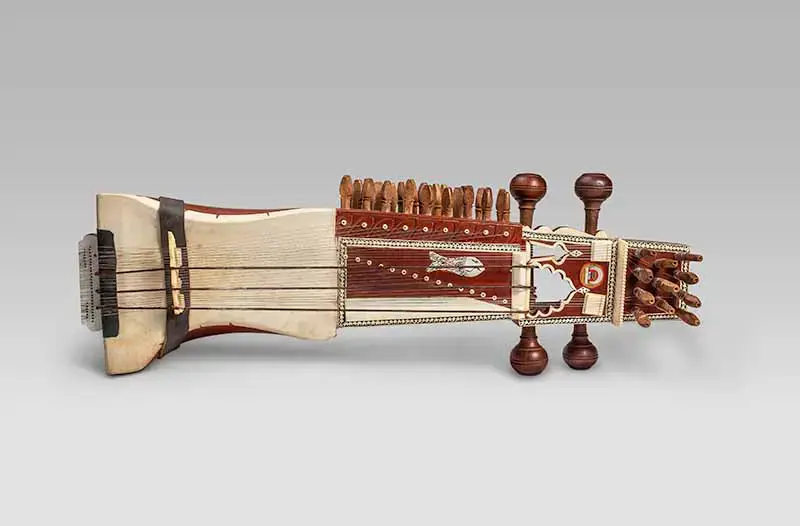The Instruments of India and Their Origins.' This series uncovers the mystique of traditional Indian musical instruments, delving into their unique histories and cultural significance. From the ancient strings of the Veena to the melodic winds of the Bansuri, we'll explore the origins, designs, and musical roles these instruments have played throughout history. We'll also touch on their modern interpretations and continued influence in contemporary Indian music. Each instrument carries with it a piece of India's rich cultural tapestry, and we can't wait to share these stories with you. Discover the enduring symphony of India, one instrument at a time."
Sitar

The sitar is a plucked string instrument from the Indian subcontinent, dating back to the 16th century. It's believed to have been derived from the veena, an ancient Indian instrument. It has a long neck and 18-21 strings, of which 6 or 7 are played. Sitar is typically used in Hindustani classical music but has also become popular in fusion and world music.
Tabla

The tabla is a pair of twin hand drums that originated in the 18th century. The two drums, known as the dayan (right drum) and bayan (left drum), are made of different materials and produce different sounds. Tabla is a key instrument in Hindustani classical music and is also commonly used in devotional, folk, and popular music.
Sarod

Thesarod is a stringed instrument, known for its deep, weighty, introspective sound. It's similar to the lute in structure. Although the exact origin of the sarod is unclear, it's believed to have descended from the Afghan rubab in the 19th century. It's a prominent instrument in Hindustani classical music
Veena

The veena is a string instrument that originated over 2,000 years ago, often represented in Hindu mythology and art. It's known for its large resonators and long, hollow neck. Veena is primarily used in Carnatic classical music, South India's classical music tradition.
Bansuri

The bansuri is a side blown flute made from a single hollow shaft of bamboo. It's one of the oldest instruments, with depictions found in Indian art dating back to 1000 BCE. It's intimately linked to the story of Krishna in Hindu mythology. Bansuri is used in Hindustani classical music, and it's also popular in folk music and Bollywood film music.
Sarangi

The sarangi is a bowed, short-necked string instrument. It's thought to have evolved from the ancient Chitra Veena, and its name means "a hundred colors", suggesting its adaptability to a wide range of musical styles. Sarangi is often used to accompany singers in Hindustani music, but it can also be a solo instrument
Mridangam

The mridangam is a percussion instrument from South India, often referred to as the "king of percussion" instruments. Originating over 2,000 years ago, it's a double-headed drum, with each head producing different tones. Mridangam is primarily used in Carnatic music.
Harmonium

The harmonium, also known as a pump organ, was brought to India by Europeans in the 19th century. It's a free-reed organ that generates sound with bellows. It quickly became popular in Indian music due to its versatility and has been widely used in Indian classical music bhajans (devotional songs), and qawwalis (Sufi devotional songs), as well as in film music.
Shehnai

The shehnai is a double reed wind instrument. Originating in the Indian subcontinent, it has a tube-like structure gradually widening towards the lower end. It is usually associated with auspicious occasions, like weddings and temple processions. The shehnai is featured in classical, folk, and film music.
Ghatam

The ghatam is a clay pot used as a percussion instrument, especially in the South Indian Carnatic music tradition. Its history can be traced back several centuries. It's unique because it's one of the few percussion instruments that, besides rhythmic accompaniment, also acts as a pitched instrument, allowing the player to produce a variety of pitches by striking different areas of the pot. It's also widely used in folk and devotional music.

Comments